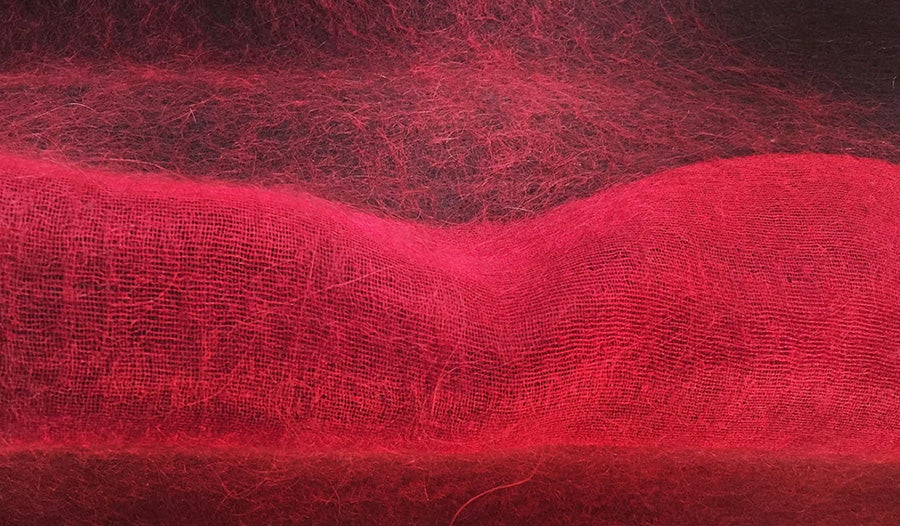
THE COLOUR OF POWER

When evoking the notion of ‘earth', plants, seeds and deep desert hues come to mind. Perhaps elements such as grass, ochre colours and textures referencing the natural world. What might not necessarily come to mind is reddish purple maroon, dark cherry and deep claret tones; symbolically coded colours signalling violence, danger and horror. And beauty. All dependent upon your viewpoint of course, since red is surely the most redolent colour in the spectrum. It's certainly expressive. Passionate, provocative, luxuriant, regal, elemental and ephemeral. The colour of power. It packs a punch.

Nigel Atkinson's work is all this and then some. Fully aware of its ability to alarm, it is not meant to be 'simply pretty'. Resultantly the impact is visceral and unforgettable. Instilling awe and wonder, alongside a greater curiosity. For those new to this award-winning artist’s work (which employs many mediums especially felt or Chinese silk and sometimes, paper or canvas) it is a revelation. Atkinson is fully immersed in the cultural aspects of his work. His Cochineal Felt Tapestry created in Oaxaca, Mexico emphases the vivid and very dark tones achieved by cochineal-dye. As he states, ‘Not technically speaking a tapestry, it employs fine needle punch felting to create blocks of fibre in transitional gradations of cochineal, floating on a very fluid, transparent base of Chinese silk gauze. Like much of my work, it hovers between the geometric and the organic’. His work revels in its material medium, and as an artist, he creates work that is visually absorbing, as well as symbolic. Much like our own earthly and current environmental crisis the enormous emotional impact is coupled with a potential brutality. Saturated red hues drip and slide across the surface. It is equal parts beautiful and uncomfortable.

The Oaxaca work encapsulates the important aspects at the heart of his subject. Respectfully working with local artisans and anthropologists, he provides an insight into the culture of cochineal. In the 16th century when the Spanish conquered and colonised Mexico, they discovered an abundance of cochineal (the highly prized dyestuff derived from the beetle that lives on the Nopal cactus) which made a red dye more vivid and permanent than any other natural dye. At the time, a kilo of cochineal was worth more than a kilo of gold. The conditions for cultivating cochineal were labour intensive and sensitive to the climate and nurture. Such skills in cultivation gave certain indigenous Mexicans privileges and status, somewhat ironically which helped them survive centuries of colonialism. Atkinson explains his interest in, ‘The aspect of self-protection - which the carminic acid creates - and the way the generations of indigenous Mexicans skilled in harvesting, were protected by this knowledge and remain to date, the largest indigenous group.’

For some, the making process of cochineal makes for discomforting and conflicting feelings, yet the the ecological benefits of using 'natural' dyes as opposed to pollutant chemicals can certainly not be overlooked.
Written by Wendyrosie Scott
